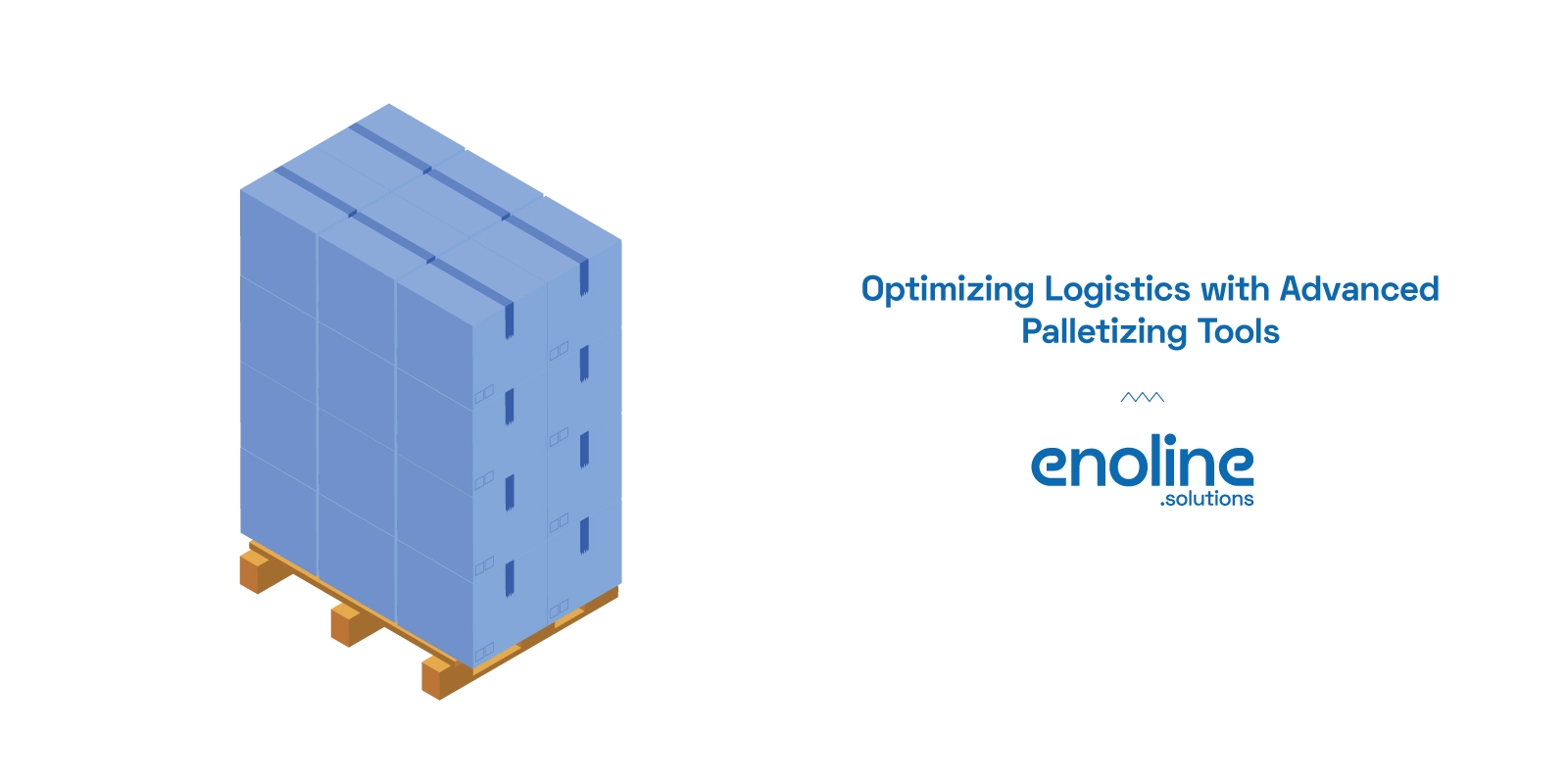July 26th
Optimizing Logistics with Advanced Palletizing Tools

Efficient palletizing is crucial for optimizing supply chain logistics, especially in industries handling large volumes of goods. Palletizing tools, from simple manual devices to advanced automated systems, play a key role in streamlining the process of stacking products on pallets for storage and shipping. This article explores the different types of palletizing tools, their benefits, and how to choose the right equipment for your needs.
Types of Palletizing Tools
1. Manual Palletizing Tools
Manual tools are ideal for low-volume operations or situations where automated systems are not cost-effective. These tools include hand pallet jacks, manual strapping tools, and hand stretch wrap dispensers. They offer flexibility and are easy to use, making them suitable for small businesses.
2. Semi-Automatic Palletizing Systems
Semi-automatic systems offer a balance between manual and fully automated processes. They include semi-automatic stretch wrappers and strapping machines that require some manual intervention but significantly speed up the palletizing process compared to manual methods. These systems are perfect for medium-volume operations looking to increase efficiency.
3. Fully Automatic Palletizing Systems
Fully automatic palletizing systems are designed for high-volume operations. These systems include robotic palletizers, automatic stretch wrappers, and automated guided vehicles (AGVs). They can handle a wide range of products and pallet configurations, offering high efficiency and accuracy. Fully automatic systems are ideal for industries such as food and beverage, pharmaceuticals, and consumer goods.
4. Robotic Palletizers
Robotic palletizers use programmable robotic arms to stack products on pallets. They offer flexibility in handling different shapes and sizes of products, making them suitable for complex palletizing tasks. These systems can be integrated with other automation solutions to streamline the entire packaging and shipping process.
5. Automated Guided Vehicles (AGVs)
AGVs are used to transport pallets within warehouses and production facilities. They can be integrated with palletizing systems to automate the entire logistics process, from stacking products on pallets to transporting them to storage areas or loading docks.
Benefits of Using Palletizing Tools
Increased Efficiency: Palletizing tools significantly increase the speed and efficiency of stacking products, reducing the time required to prepare shipments. Automated systems, in particular, can operate continuously without the need for breaks, further enhancing productivity.
Improved Safety: Manual palletizing can be labor-intensive and pose safety risks, such as strains and injuries from heavy lifting. Using palletizing tools reduces these risks, providing a safer working environment.
Consistency and Precision: Automated palletizing systems ensure consistent stacking and packaging, reducing the likelihood of errors and product damage during transport. This consistency helps maintain product quality and customer satisfaction.
Cost Savings: While the initial investment in automated palletizing systems can be high, the long-term cost savings are significant. Reduced labor costs, minimized product damage, and improved efficiency all contribute to a lower total cost of ownership.
How to Choose the Right Palletizing Tool
Assess Your Needs
Evaluate the volume of products you need to palletize and the level of automation required. For small operations, manual or semi-automatic tools may suffice. Larger operations will benefit from fully automated systems.
Consider Product Specifications
Different products require different palletizing solutions. Consider factors such as product weight, size, and fragility when choosing your palletizing tools. Robotic palletizers offer the most flexibility in handling a variety of products.
Budget and ROI
Determine your budget and calculate the potential return on investment (ROI) from investing in palletizing tools. Automated systems may have a higher upfront cost but offer significant savings in the long run through improved efficiency and reduced labor costs.
Integration with Existing Systems
Ensure that the palletizing tools you choose can be integrated with your existing warehouse or production systems. This integration is crucial for maximizing efficiency and streamlining your operations.
Conclusion
Palletizing tools are essential for optimizing the logistics and supply chain processes in various industries. From manual tools to advanced robotic systems, there is a solution to meet the needs of businesses of all sizes. By choosing the right palletizing tools, companies can enhance efficiency, ensure product safety, and reduce costs, ultimately improving their overall operational performance.
Let us find the best palletizer for your company !
